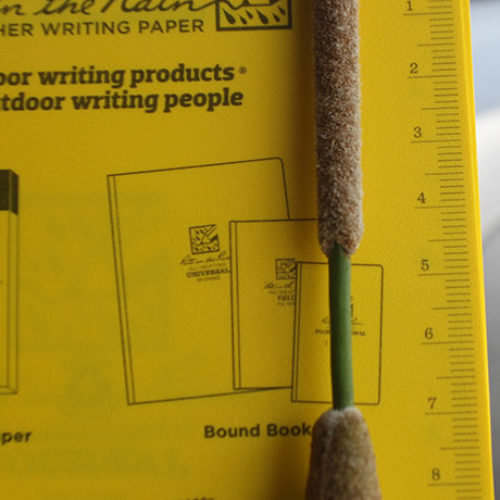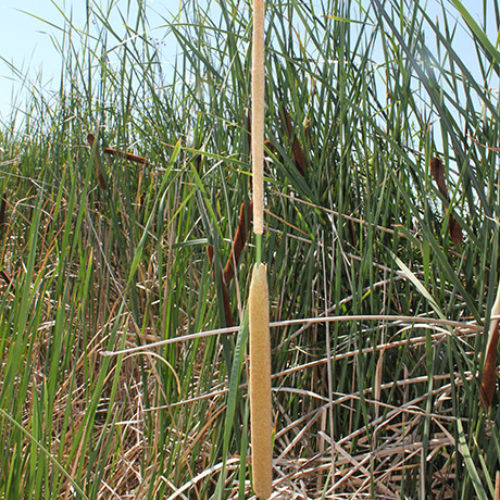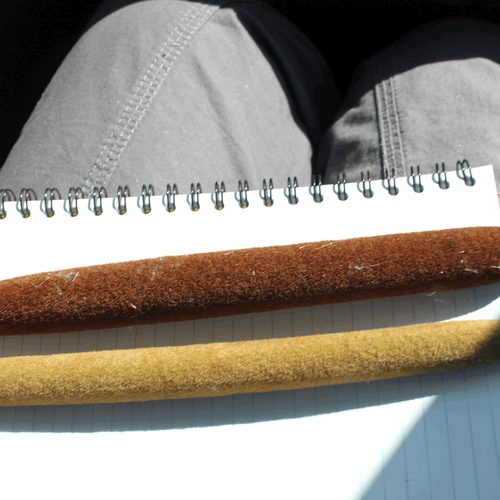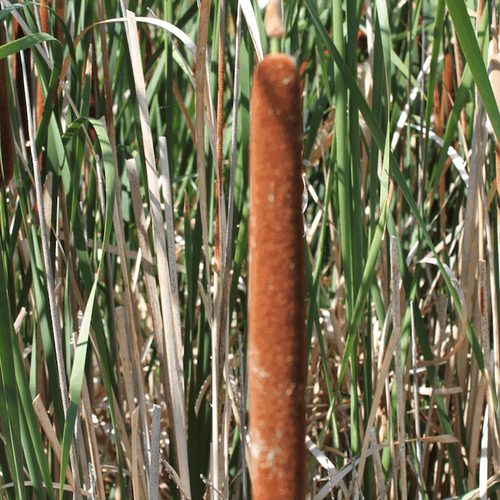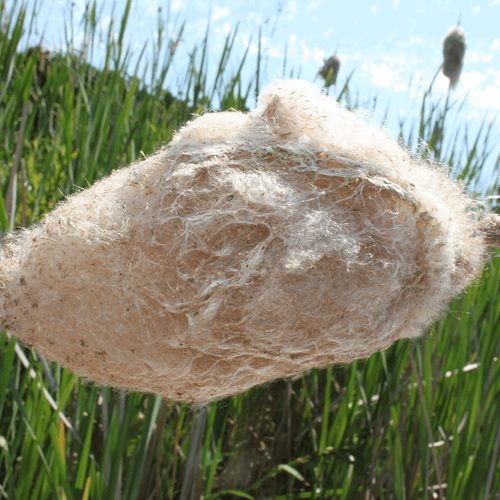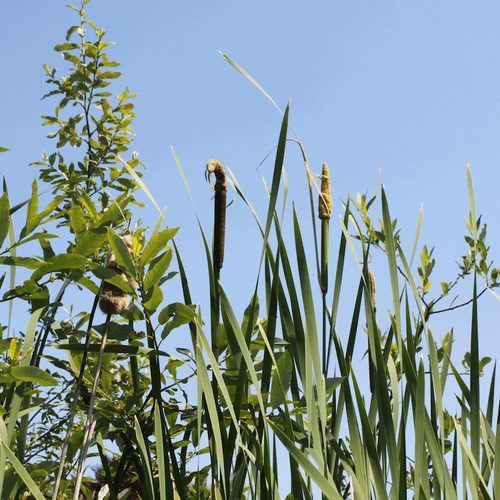Nonnative Cattails
Typha species
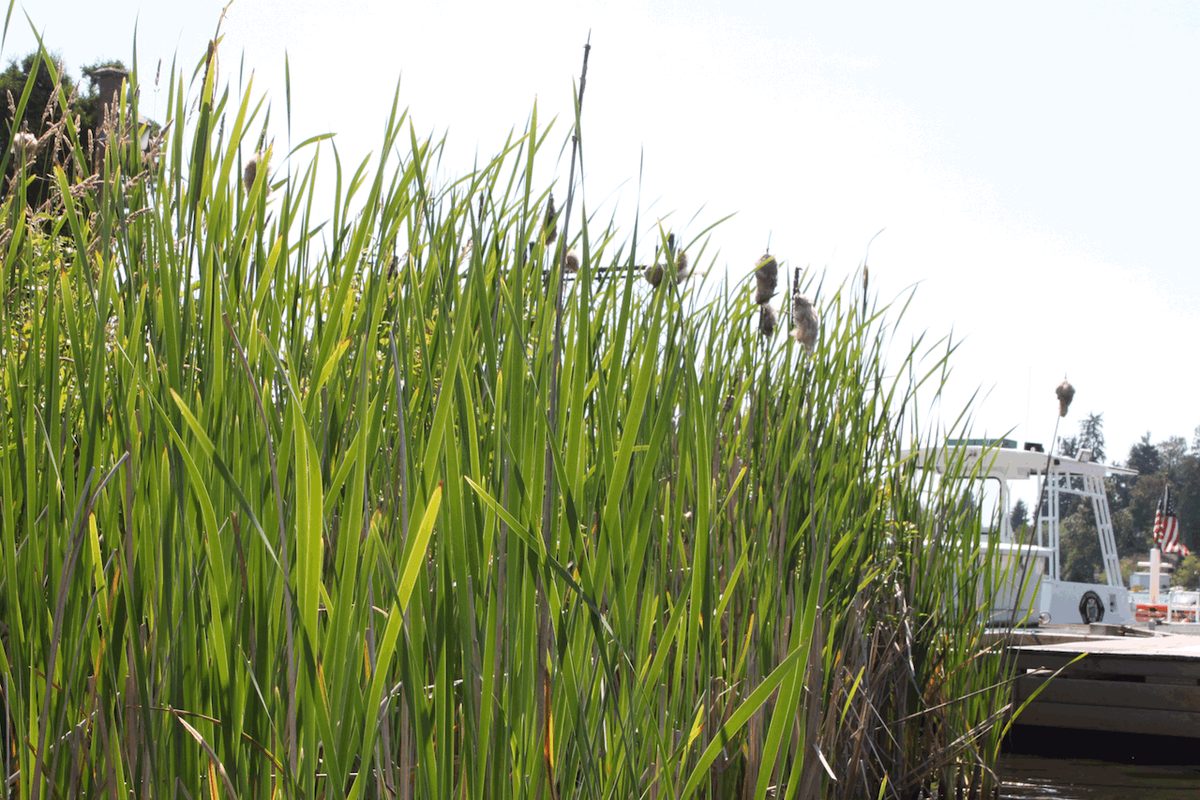
Family: Typhaceae
Other Common Names: cattail, cattail hybrids, narrow-leaf cattail, southern cattail, small reed mace, reed mace, flags, bulrushes, cat o’nine tails, Cossack asparagus, baco
Weed class: C
Year Listed: 2014
Native to: varies by species
Is this Weed Toxic?:
not known to be
Why Is It a Noxious Weed?
Nonnative, invasive cattail species are capable of displacing native plants, changing the genetic profile of native cattail stands, altering marsh habitat, and invading managed aquatic systems. These nonnative cattails have been documented for invasiveness in many parts of the country and currently have a limited distribution in Washington, although recorded occurrences are increasing.
How would I identify it?
General Description
Cattail species and hybrids are perennials that grow in fresh to slightly brackish wetlands, often emergent in water up to 1.5 meters deep. Stems are either vegetative or produce flowers. Differences in a number of characteristics can help tell species and hybrids apart.
Flower Description
Cattail inflorescences are cylindrical spikes of small monoecious flowers, with male (staminate) flowers occurring above the female (pistillate) flowers, all directly on the main axis and intermixed with slender hairs. Size of the spike can vary depending on species.
Leaf description
Leaves are alternately arranged, 2-ranked, sheathing, linear and rather spongy. Leaf blades twist into a loose helix. Leaves have mucilage-secreting glands that are numerous on inside surface of the leaf sheath and sometimes proximally (near the base) on the leaf blade. The glands are colorless to brown and roughly rectangular.
Stem description
Stems are erect and pithy, growing from rhizomes. Stems are unbranched and either vegetative or flowering. Growing up to 4 meters tall, stems are elliptic in cross section.
Fruit Seed Description
Fruits are small follicles, football-shaped, splitting longitudinally in water to release the seed. Seed counts per spike have been estimated ranging from 20,000 to 700,000.
May Be Confused With
Typha latifolia, broad-leaved cattail or common cattail, Washington’s only native Typha species, is distributed widely throughout the State, is not included in this listing. Generally there is a gap in the flowers of nonnative cattail species and hybrids between the male and female flowers while our native cattail typically does not have a gap. Also, native cattail leaves are generally wider than nonnative species and hybrids leaves. See our written findings for more information.
Where does it grow?
Nonnative cattail species and hybrids grow in wet or saturated soils and aquatic sediments in marshes, wet meadows, lakeshores, pond margins, seacoast estuaries, ditches, bogs and fens. They can invade managed and recreation aquatic systems including canals, ditches, reservoirs, cultivated fields, farm ponds and swimming and boating areas. Click here to see a could level distribution map of nonnative cattail species in Washington.
How Does it Reproduce?
Plants can spread by rhizomatous growth and by seed (except for Typha x glauca, which doesn't produce viable seed). Plants are wind-pollinated and seeds are dispersed by wind, water, soil movement, human activities and by clinging with mud to the feet and fur of people and animals.
How Do I Control It?
General Control Strategy
Nonnative cattail species tend to invade and form monotypic stands in preferred habitats when hydrology, salinity or fertility have changed. Maintaining water flows into wetlands, lowering nutrient inputs and returning salinity to pre-disturbance levels will help maintain desirable plant communities. Please make sure to identify cattail species as nonnative before control, our native cattail, Typha latifolia, is not included in this listing.
Mechanical Control
Mowing, burning, tilling and flooding have been used in combinations to control nonnative cattail species and hybrids. Repeated cutting can be used for control as well. Cutting stems so remaining stems are submersed by water can provide effective control. Please see our written findings for more information.
Cultural Control
Manipulating water levels, if possible, is another technique that may be incorporated into a management plan. Shading plant rhizomes with tarps can be effective as well.
Biological Control
Deer may eat the tops of succulent cattail seedlings less than 18 inches tall and the basal portions of resprouts less than 3 feet tall. There are no approved biological controls for nonnative cattail species or hybrids.
Herbicide Control
Use of pesticides in water is regulated in Washington State. All applicators must have an aquatic endorsement on their pesticide applicators license, which is issued by the Washington Department of Agriculture. In addition, coverage under a permit issued by the Department of Ecology is required. See http://www.ecy.wa.gov/programs/wq/pesticides/index.html for details or contact your county noxious weed coordinator.
For More Information
See our Written Findingsfor more information about non-native cattails and hybrids.
UW Herbarium (WTU) image database information: Typha x glauca
UW Herbarium (WTU) image database information: Typha angustifolia
UW Herbarium (WTU) image database information: Typha domingensis



